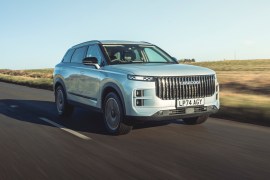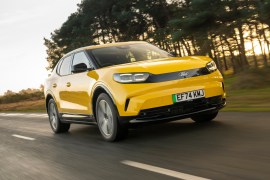Mercedes-Benz EQS SUV review: packed with tech
A big, luxury car packed with enough technology to put PC World to shame

Stuff Verdict
The Mercedes-Benz EQS SUV may just be the ultimate luxury electric family car. It’s comfortable, quiet, and has space for the whole family. Those demanding efficiency should opt for the saloon, though
Pros
- Big and comfortable
- So. Much. Tech.
- Lots of space
- Easy to drive with dual axle steering
Cons
- EQS saloon is more efficient
- Cabin quality doesn’t match the high price tag
- Lots of competent rivals in this price bracket
Introduction
Looking for a big, comfortable, luxury electric SUV? There are plenty of options out there, but the Mercedes-Benz EQS SUV might be the biggest, the comfiest, and the most luxurious-t around. The original saloon version of the EQS is one of my favourite electric vehicles, with a usable 400+ mile range that made it one of the first EVs with very few compromises. Now I have a child, and travel with all of the prams, toys, travel cots and spare clothes a child needs, I was excited to test out the more practical SUV version.
Being a luxury electric SUV, you get a plethora of technology to fill every inch of the vast cabin. With everything from level three self-driving tech to facial recognition and RGB lighting to the show-stealing Hyperscreen centre console, there’s enough tech here to put a branch of PC World to shame. Of course, you also get the cachet and sophistication that comes along with driving a Mercedes.
So, what about the drivetrain? The EQS SUV is available in two motors, the 450 4MATIC and the 580 4MATIC, which have 355bhp and 536bhp respectively. Both come with all-wheel drive, with the 450 able to accelerate from 0-60 mph in 6 seconds; the 580 can do it in 4.6. Clearly neither lacks pace. Crucially for such a large vehicle, it sits on a huge 108kWh battery with charging rates of up to 200kWh.
The style
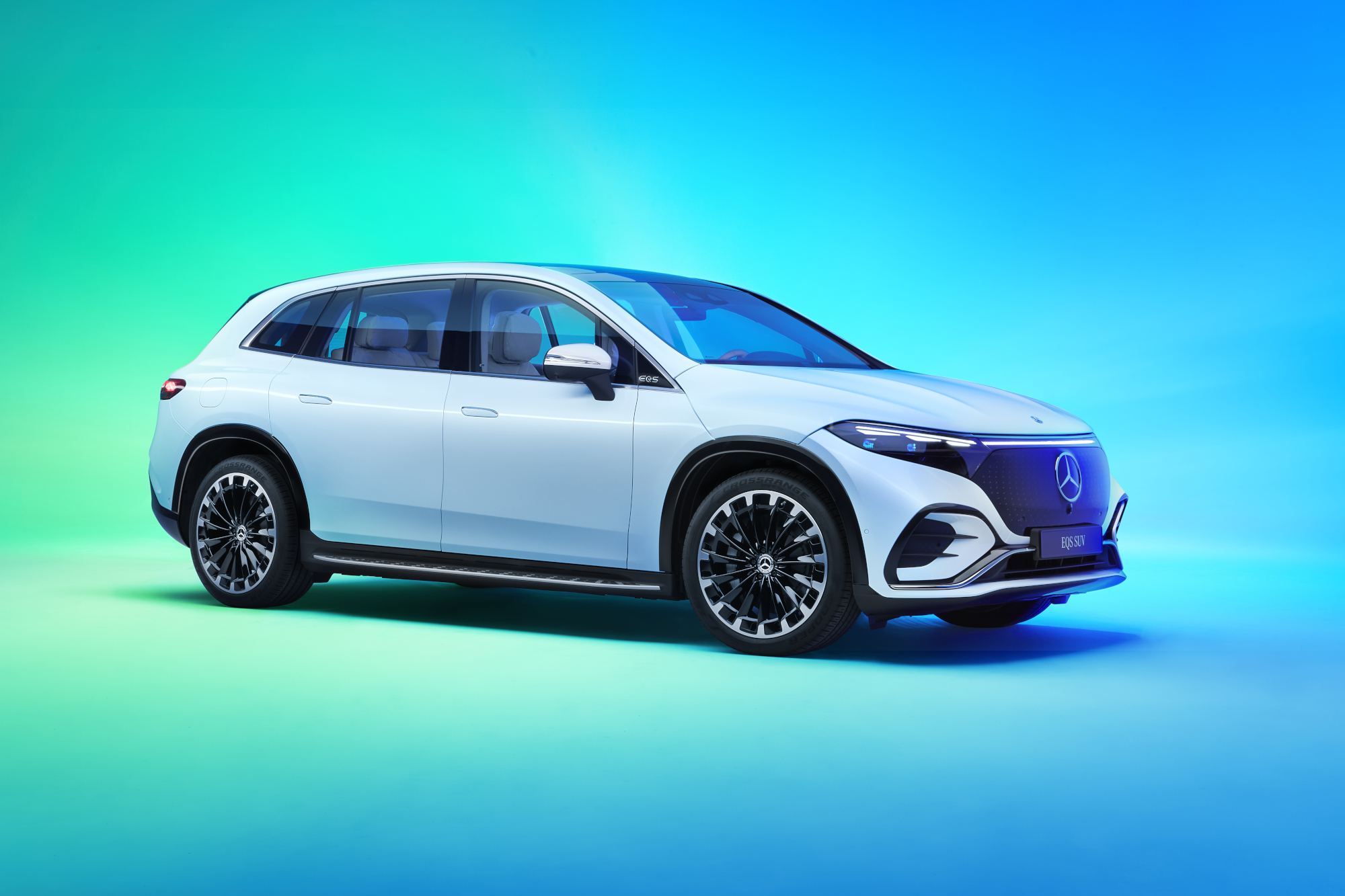
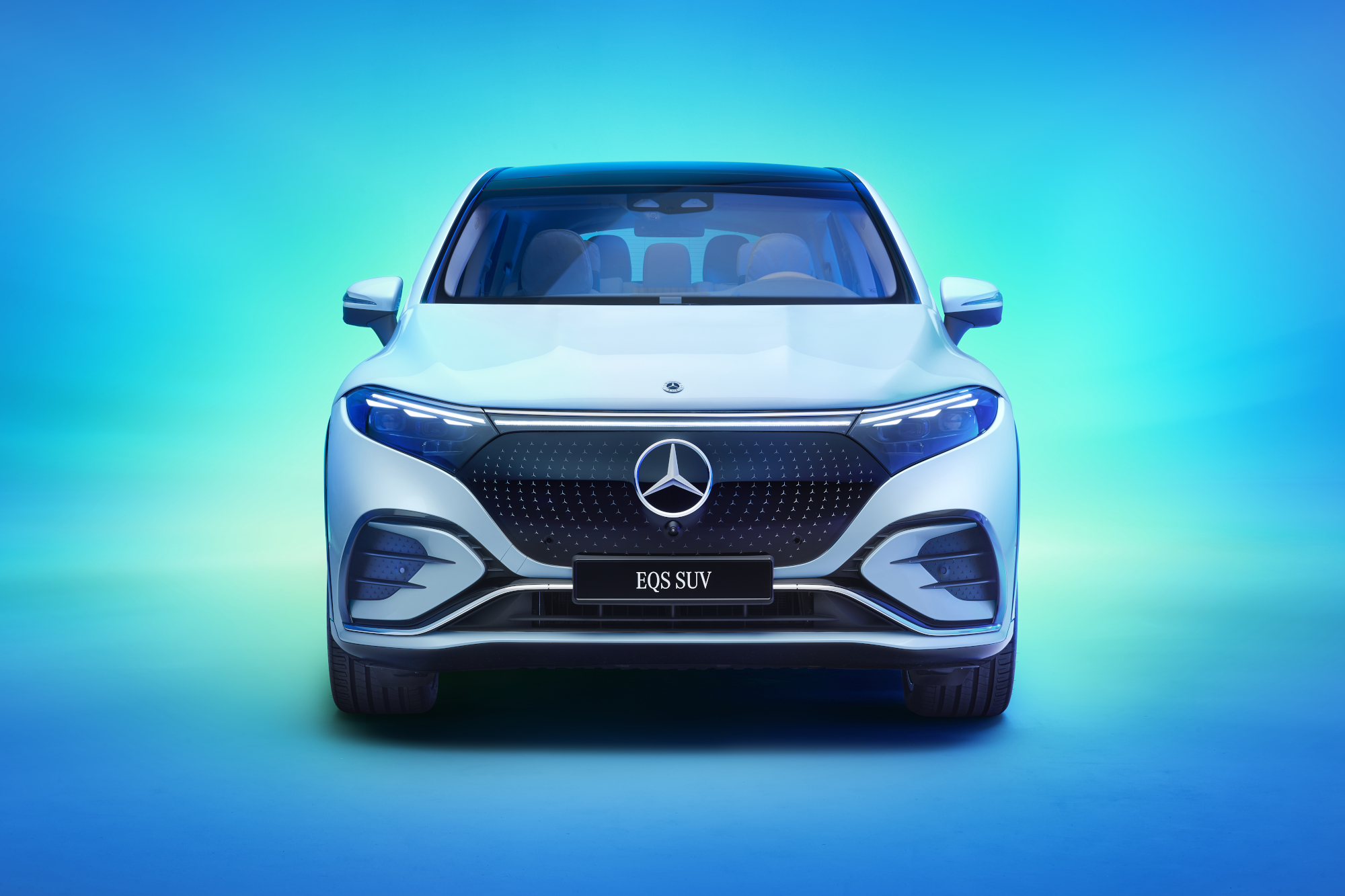
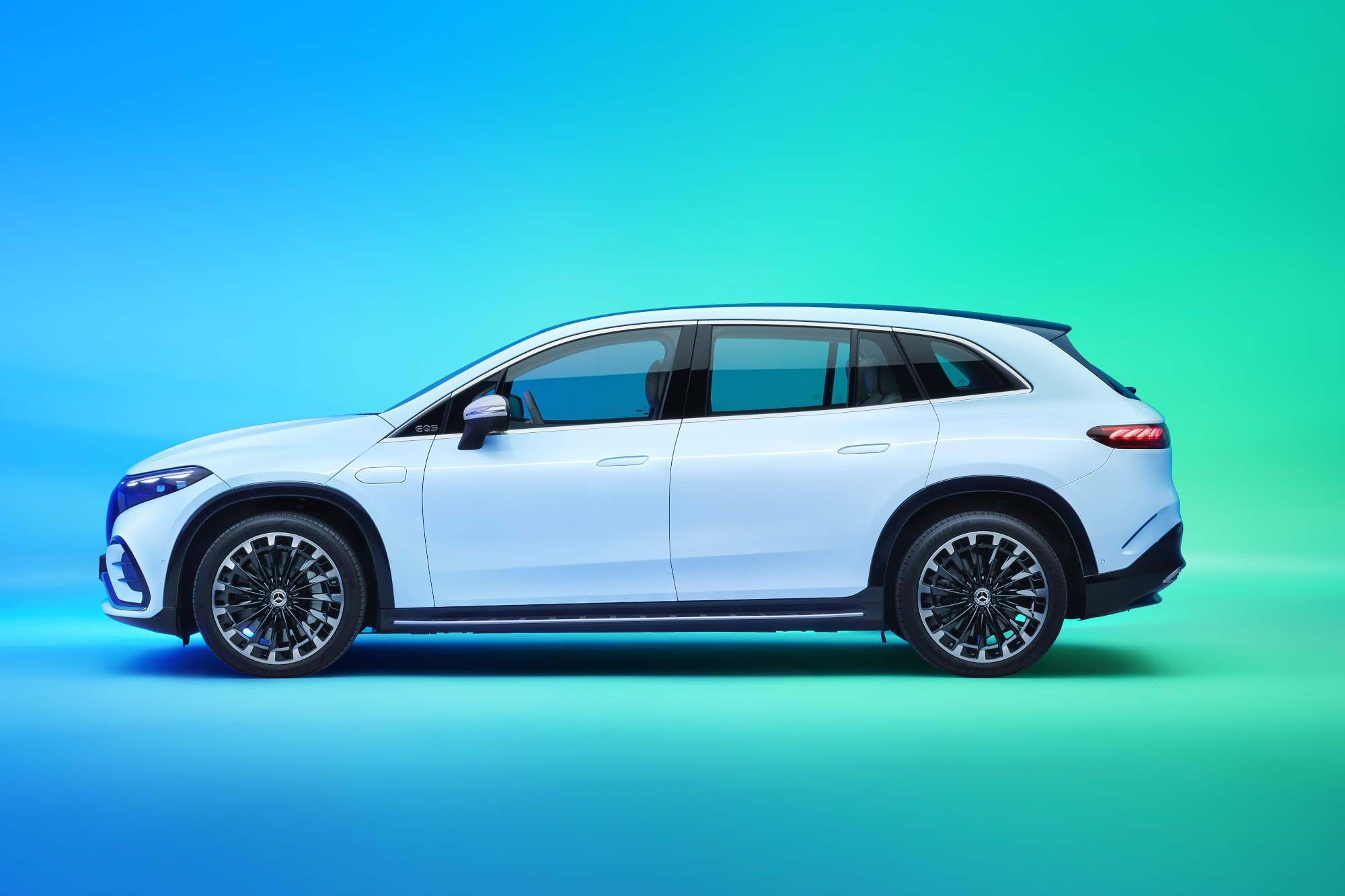
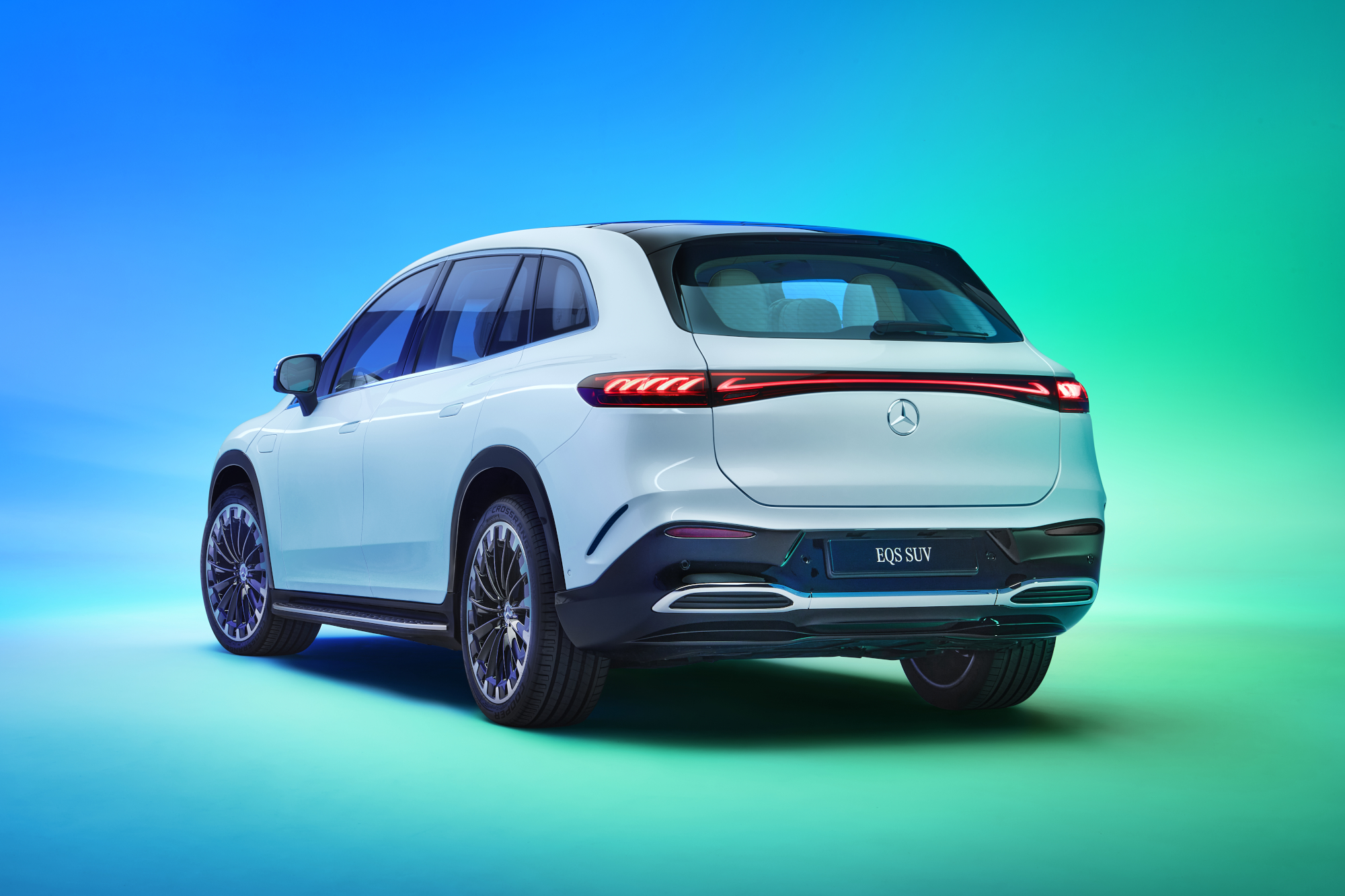
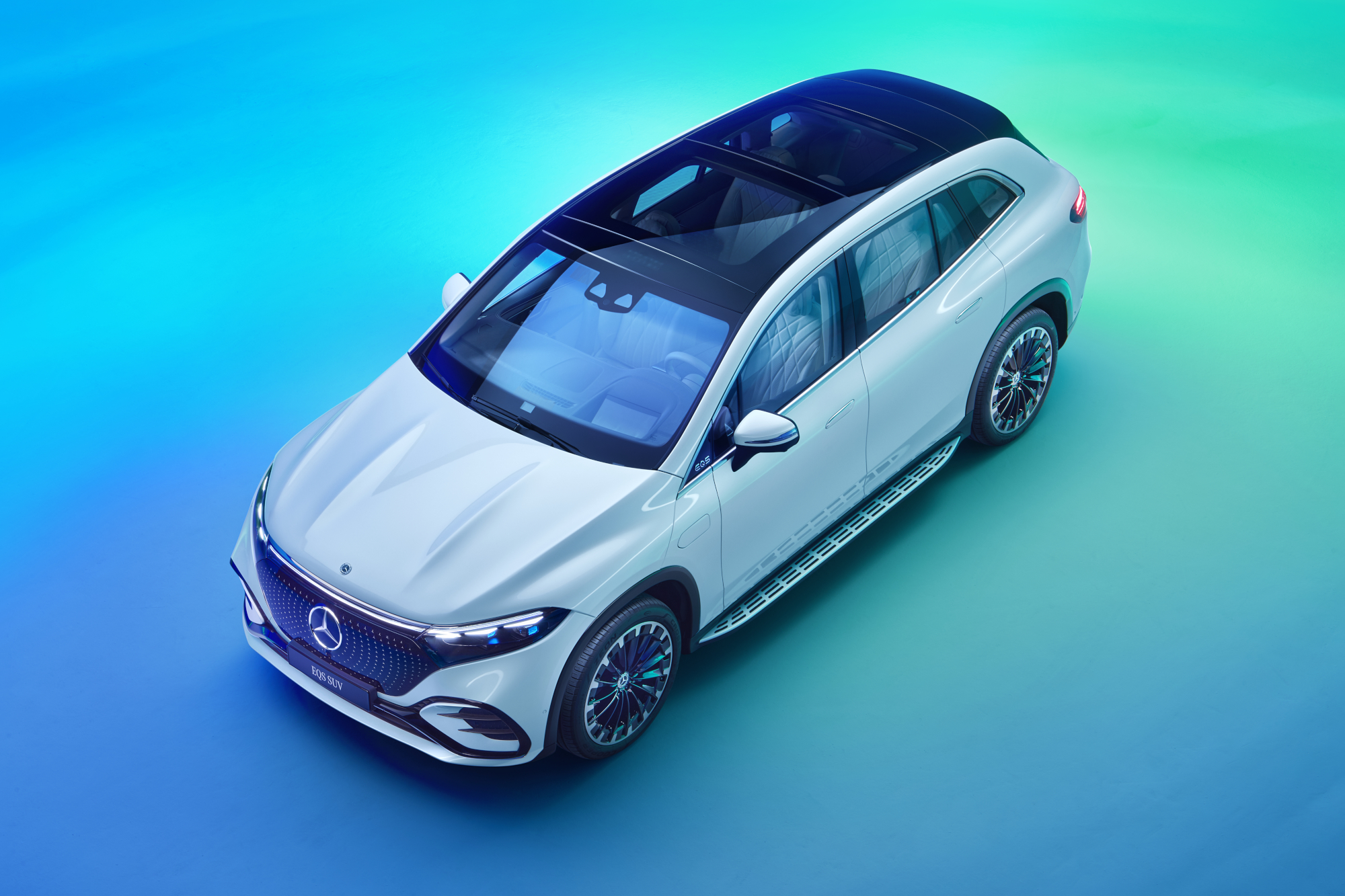
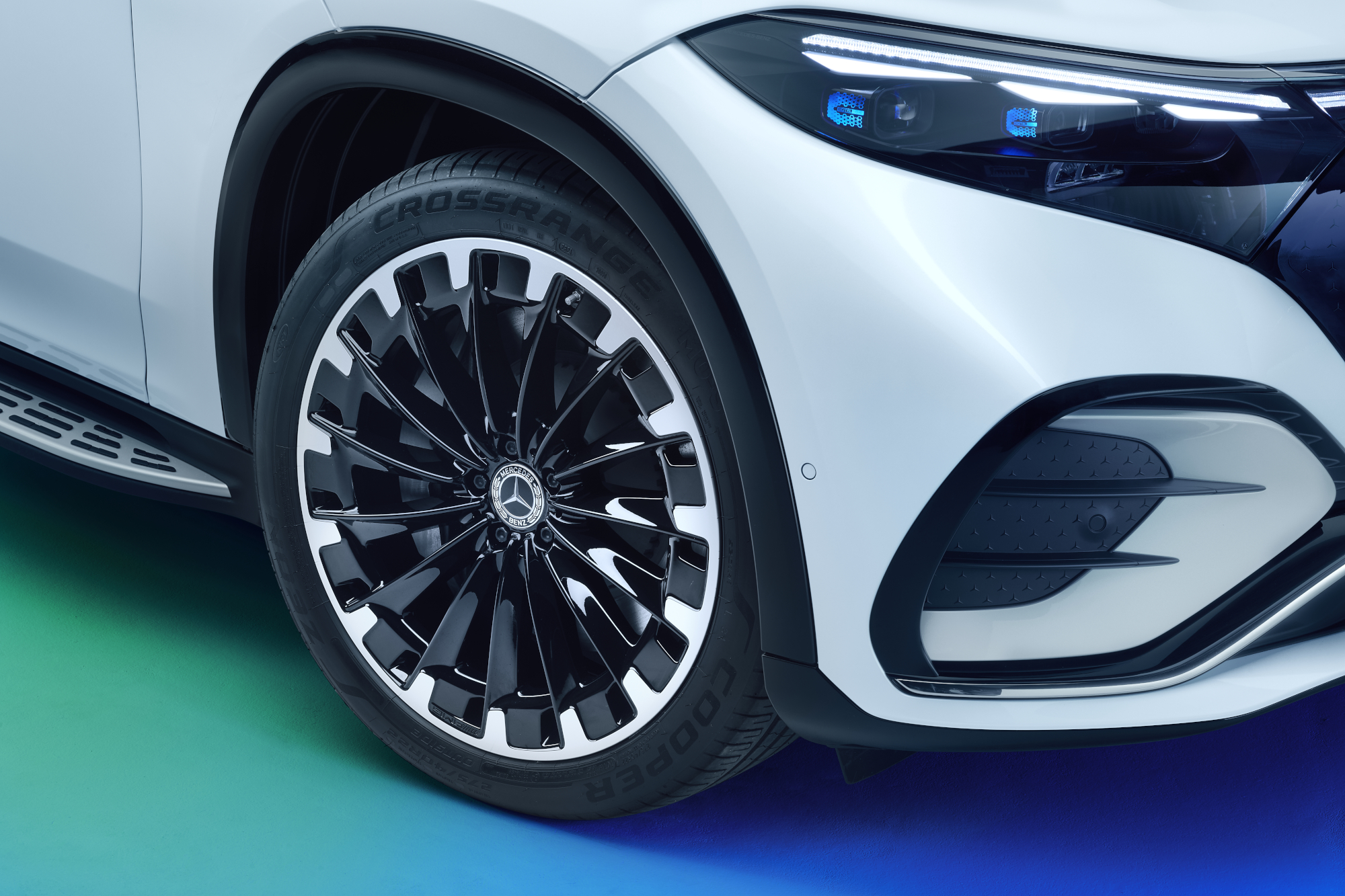
At 5.1 x 2.1 metres, the Mercedes EQS SUV is gigantic. It’s not as boxy as a Kia EV9 or Land Rover Defender, so it inherently feels less practical than those vehicles, but the design does give it an air of sophistication and luxury. Of course, that teardrop design also results in a low 0.25 drag coefficient, meaning it can slip through the air with higher efficiency. Like the other two, you still get the option of seven seats, but the third row feels a little more cramped than the Kia and Land Rover. Where the EQS SUV really excels is manoeuvrability, thanks to dual axle steering. The rear wheels can change angle up to 10º, resulting in a turning circle of just 11.9 metres. It makes getting in and out of tight parking spaces very easy, despite the car’s dimensions.
Aesthetically, the EQS divides opinion. Many people don’t like its smooth, pebble-like design, criticising it as bland, but I happen to think that Mercedes’ EV styling has become quite distinctive. If you see it driving down the road, you’ll immediately recognise it as an electric Merc. Does it look as good as its fossil fuel-powered sibling, the GLS? Maybe not, but you have to appreciate the EQS’s deviation to function and aerodynamics.
Inside the EQS is as futuristic as you’d expect. It feels light, spacious, and airy, making it generally a very pleasant place to be. The Hyperscreen (which is actually three screens made to look like a single large one) stretches between the A-pillars and looks more like a Sci-Fi movie prop than a contemporary car interior. It’s incredibly easy to use, with all of the main functions easy to hit at a glance. It’s certainly one of the most (if not the most) user-friendly all-screen infotainment systems I’ve ever used. Delve deep into the settings and you’ll be able to change the colours of the ambient lighting, with thousands of settings and ‘moods’ which can completely change the feeling of the interior – it’s a feature I really love.
One aspect I don’t love, however, is the interior quality, which doesn’t feel like a £130,000 vehicle. You don’t have to hunt for long until you find cheap-feeling pieces of trim – the GLS gives you a much more premium interior at a fraction of the cost.
The drive
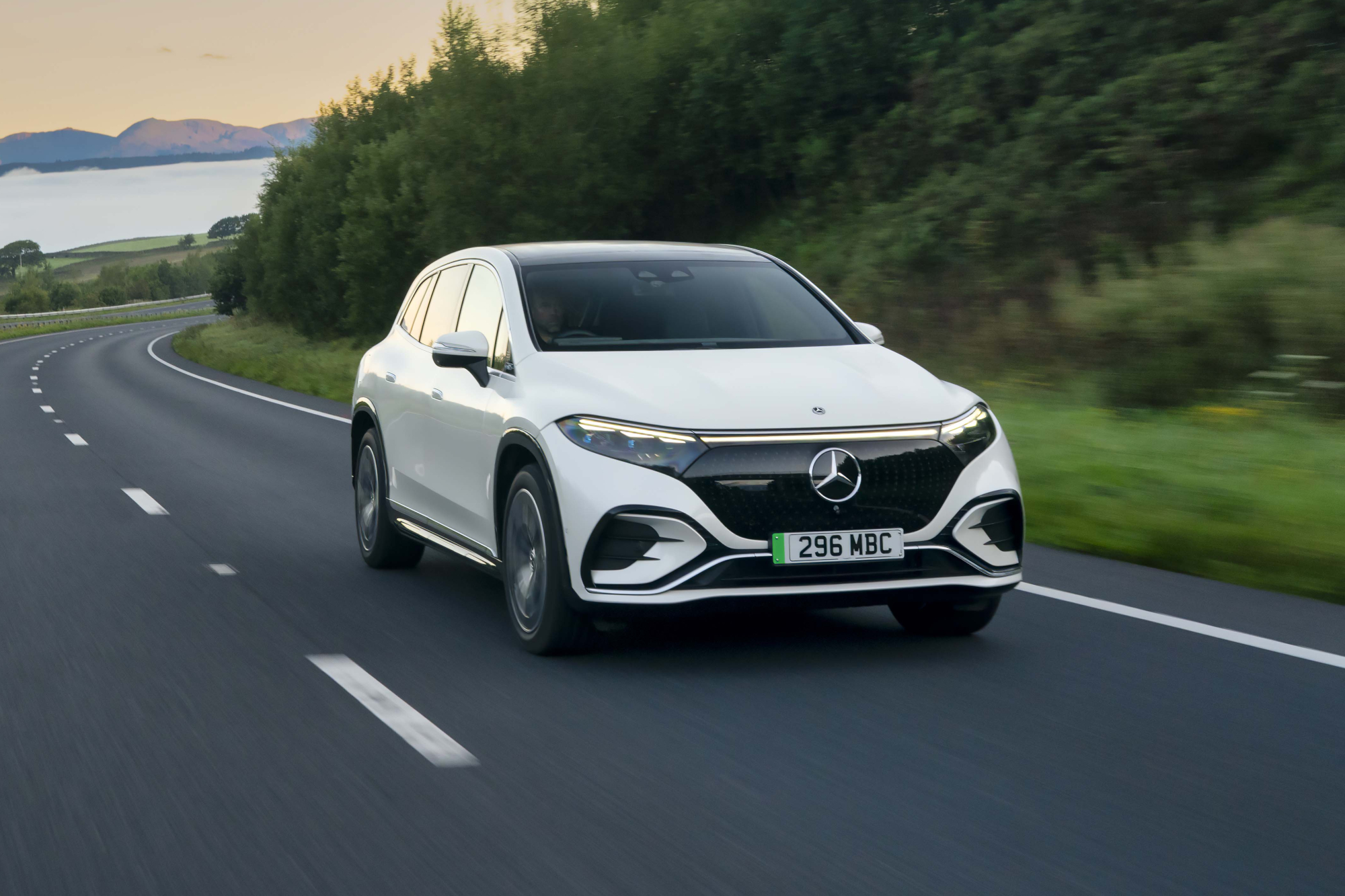
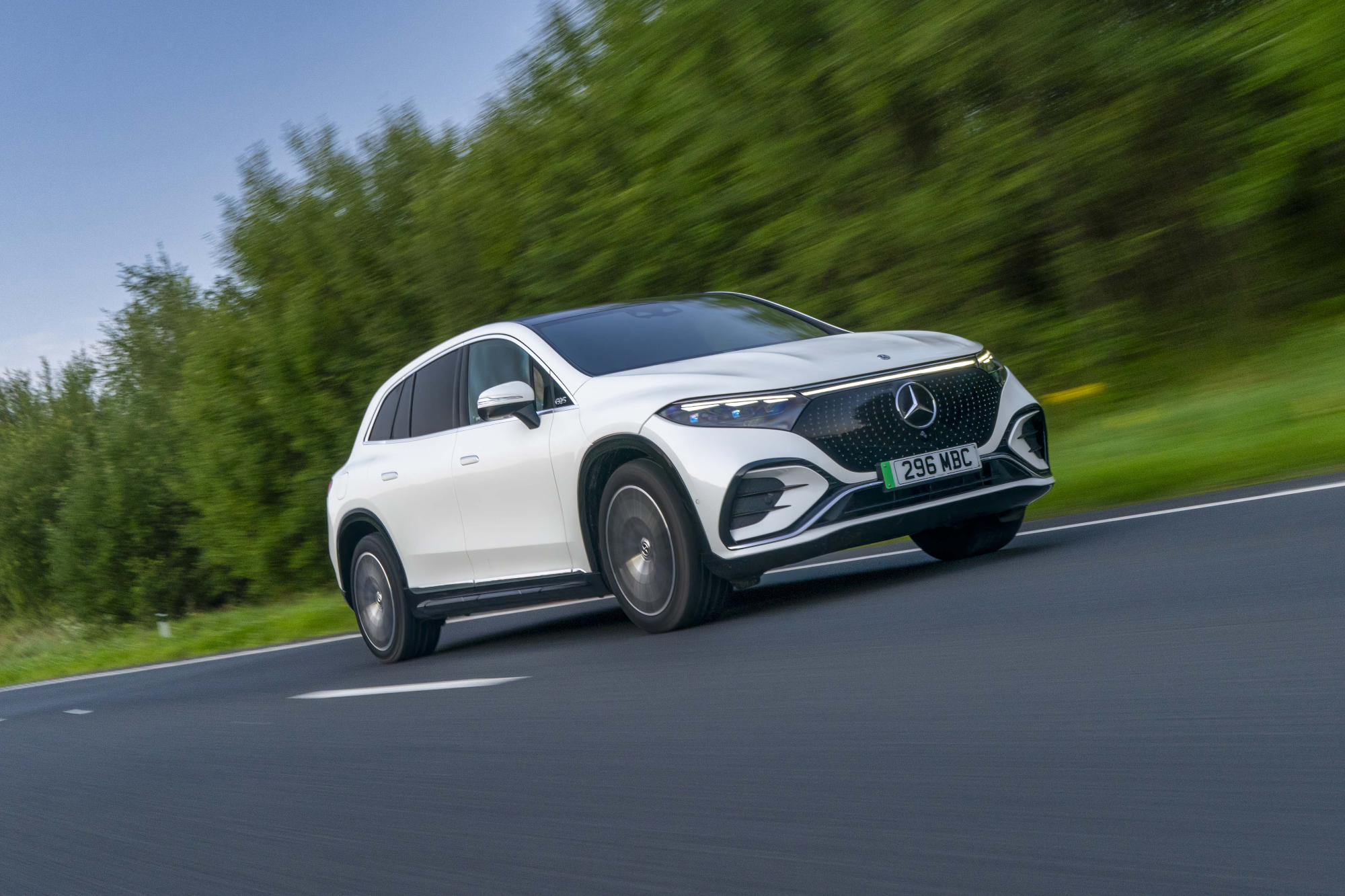
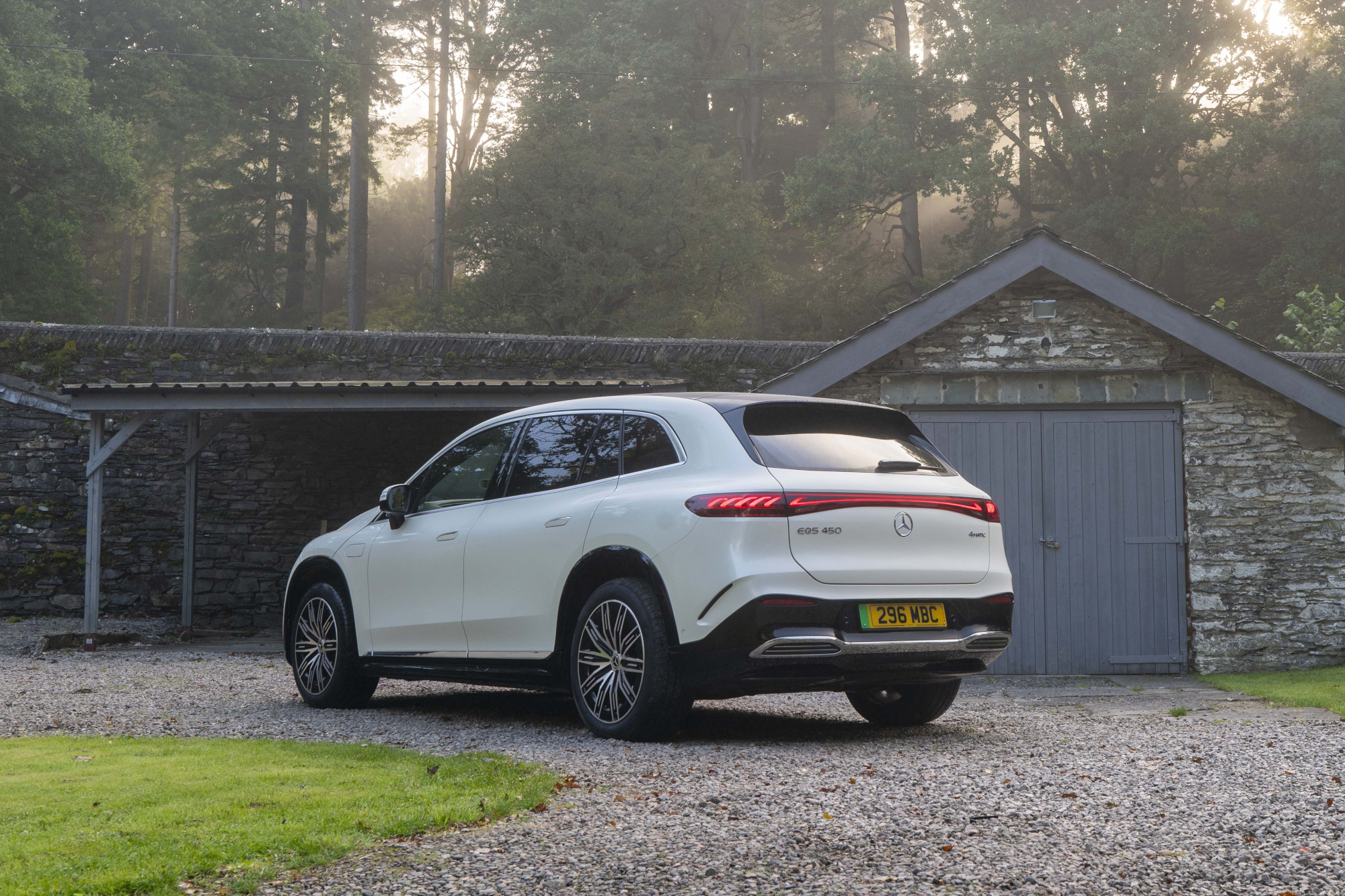
As I previously touched upon, despite the EQS’ monumental size, it isn’t the handful you might expect it to be. The car feels much smaller than it is thanks to that dual axle steering, making getting in and out of tight parking spaces or multi-story car parks a breeze. On the open road, the EQS shrinks around you and feels just like any other vehicle (although you may wince if you need to drive through a width restrictor).
The EQS feels much like any other large electric SUV to drive, that is to say, it’s quiet, comfortable and properly rapid in a straight line. The air suspension is soft and floaty, although thanks to the car’s 2805kg kerb weight I found it does tend to jolt over sharper bumps and potholes. Having said that, it’s still a vehicle you can cover plenty of miles in comfortably.
The 450 4MATIC model I drove felt plenty rapid enough for a vehicle of this size, but if you require even more pace then opt for the even more potent 580 4MATIC. When it comes to stopping the regenerative system has several settings which can be selected with the flappy paddles behind the steering wheel. I really like the method of selecting the regenerative braking level, although I tend to keep the EQS in its ‘Intelligent’ mode, which automatically applies the correct amount of braking depending on how fast you’re going, whether you’re approaching a junction, roundabout, or queue of cars. It’s very smart and gets it right most of the time. When it does get it wrong, however, then you’ll need to apply extra braking, which can feel aggressive at times.
The Mercedes EQS has pretty much every driver assistance package available. Everything from adaptive cruise control to active lane keep assist is present here making the vehicle essentially autonomous when driving on the motorway. I drove from Bicester to Norwich and found it a very easy experience.
The EQS SUV has an official range of 365 miles, but I found you’re more likely to get around 300-320. While that’s nothing to be sniffed at, the saloon version can reach over 400 miles, so if you’re after all-out efficiency then opt for the saloon version instead.
The technology
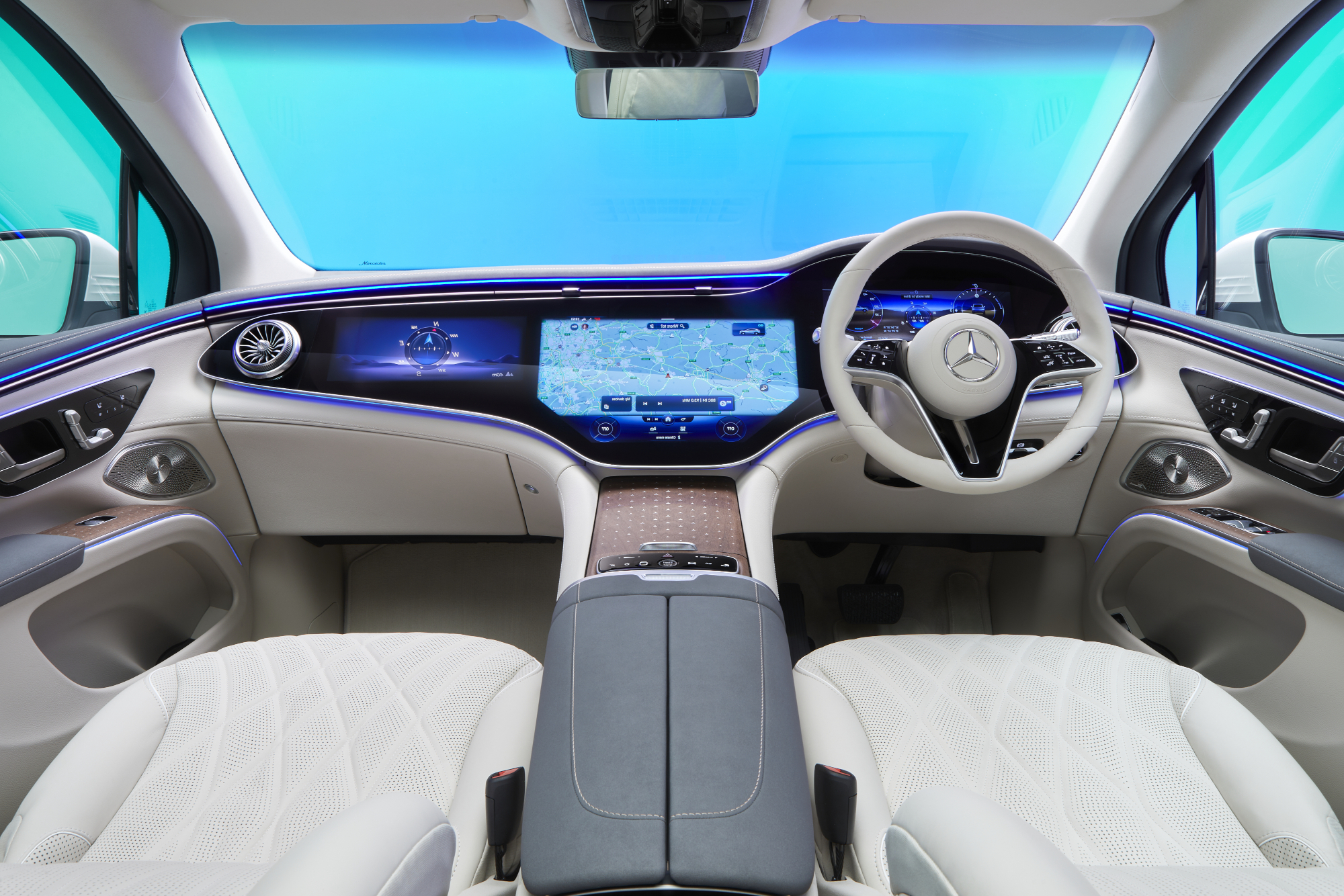
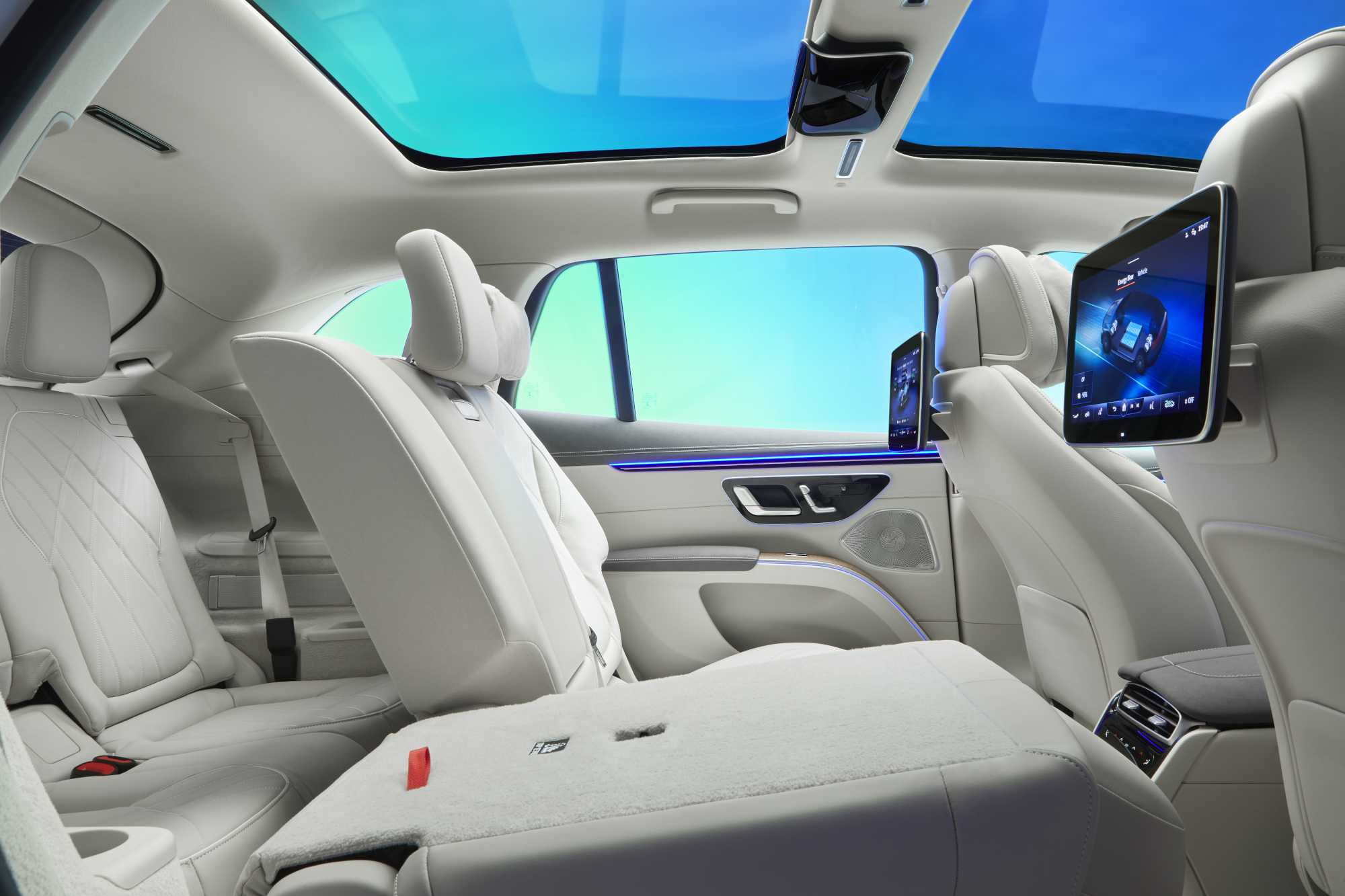
Ah, technology – this is where the Mercedes-Benz EQS really comes into its own. As previously mentioned, the real highlight here is the Hyperscreen, a big glass panel that extends across the entire width of the interior, housing an LCD driver’s display, a 17.7in OLED centre media display and a 12.3in display for the front passenger. It looks great and I’ve found it very easy to use. This is because Mercedes has what’s called a ‘Zero layer user interface’ which aims to only show the information and controls you actually want to use, thus avoiding over-complication. Mercedes even claims that this system will learn your decisions over time to get improved results. This is actually one of the few cars I don’t use Android Auto in.
In addition to the Hyperscreen, you also get a massive heads-up display (which even shows large direction arrows floating above a junction where you need to make a turn) and an excellent Dolby Atmos surround sound system.
The ‘Hey Mercedes’ voice assistant is also vastly more capable than before, it can help with connecting a smartphone by Bluetooth or even telling you where the first-aid kit can be found. I found it very useful for controlling functions of the car, like opening the panoramic roof or turning the heating up. Usually, I try these voice assistants once and then forget about them, but I found myself continuing to use Hey Mercedes’.
One feature I really liked is what Mercedes calls ‘Sound Experiences’. These pipe artificial audio through the Burmester surround sound system (and outside when you’re approaching the vehicle) gives the vehicle audible character. But rather than artificial engine noises, Mercedes has opted for more orchestral harmonies. There are three options to choose from, Roaring Pulse, Silver Waves and Vivid Flux. They’ll build and get louder as you accelerate, or provide a nice subtle hum while you’re sat idle. I found all three very pleasant and enjoyed switching between them.
One final techy feature that I absolutely love is the Digital Light headlights, which can project animations and warning symbols onto the road ahead. It consists of three extremely powerful LEDs in each headlamp, whose light is refracted and directed by 1.3 million micro-mirrors. They’re connected to a control unit with a GPU and use an HDMI-like connection to generate a continuous 1.3MP video stream to the lights. I really enjoy the customisable animated light show when the vehicle is turned on and off, and I am constantly impressed when the lights point towards a potential hazard in the road (such as road works or a pedestrian).
Mercedes-Benz EQS SUV verdict

I was prepared to write off the Mercedes-Benz EQS SUV as just another electric SUV, but it’s difficult not to be impressed by the sheer amount of technology packed into this thing. If you love cutting-edge tech, then I’m sure you’ll be equally impressed with everything on offer here and you’ll be able to see past the few small niggles (such as the cheap feeling interior trim).
Of course, it’s not only about the technology. The EQS SUV is rapid, comfortable, and has all the space you’ll ever need inside. It’s easy to drive thanks to the dual axle steering, and with 320 miles of usable range, is great for longer journeys. If you’re looking to transport your family in luxury, while creating zero tailpipe emissions, it’s ideal.
Stuff Says…
This may just be the ultimate luxury electric family car – it’s comfortable, quiet, and has plenty of space for the whole family. Those looking for ulåçtimate efficiency should opt for the saloon, though
Pros
Big and comfortable
So. Much. Tech.
Lots of space
Easy to drive with dual axle steering
Cons
EQS saloon is more efficient
Cabin quality doesn’t match the high price tag
Lots of competent rivals in this price bracket
Mercedes-Benz EQS SUV 450 4MATIC technical specs
| Drivetrain | 2x permanent magnet synchronous electric motors, all-wheel drive |
| Battery | 108.4kWh |
| Power | 355bhp |
| Torque | 590lb-ft |
| 0-60mph | 6.0sec |
| Top speed | 130mph |
| Range | 365 miles |
| Charge rate | 200kWh |
| Cargo volume | 645 / 565 litres |
